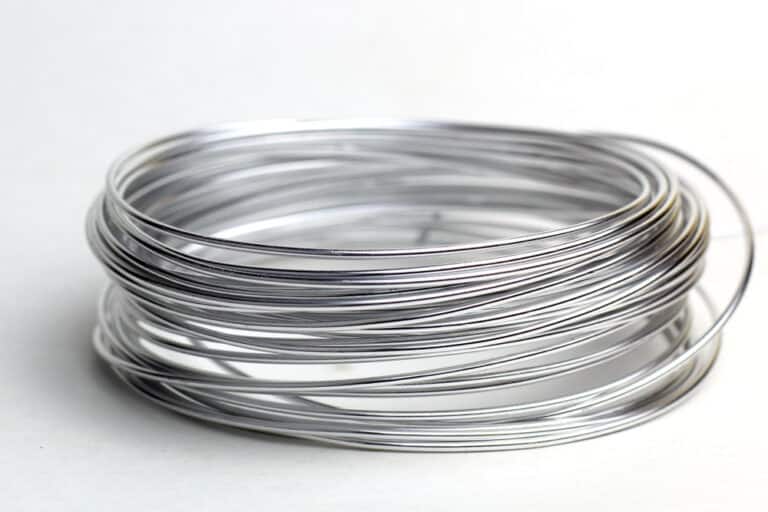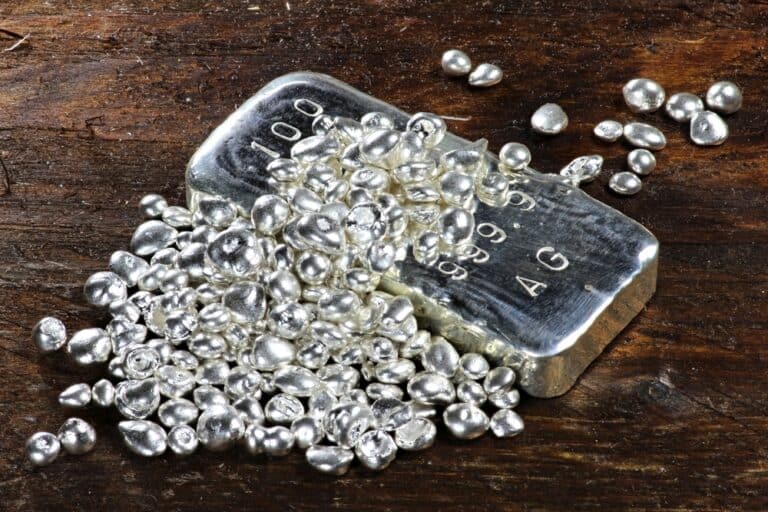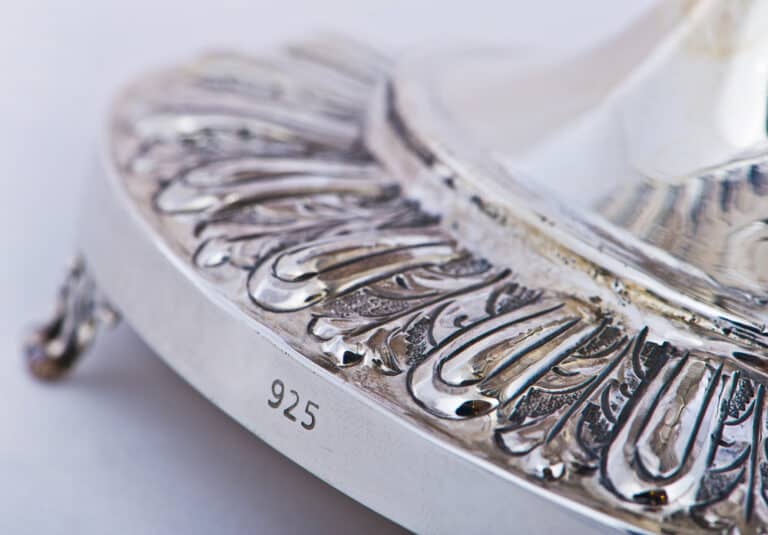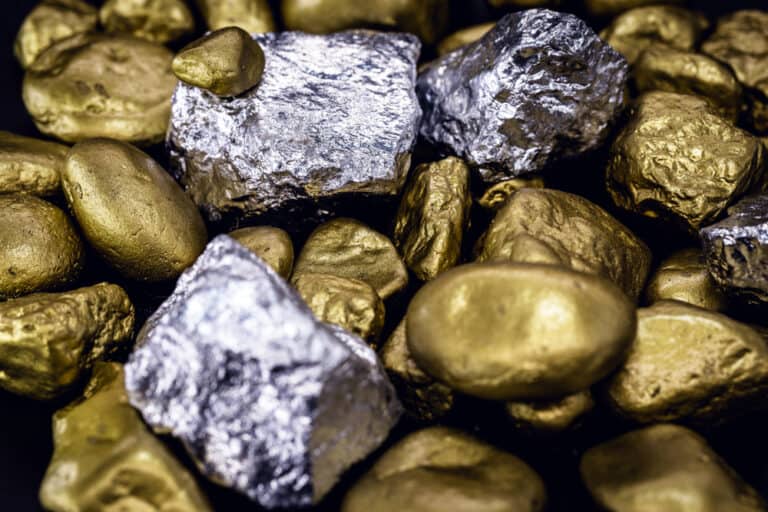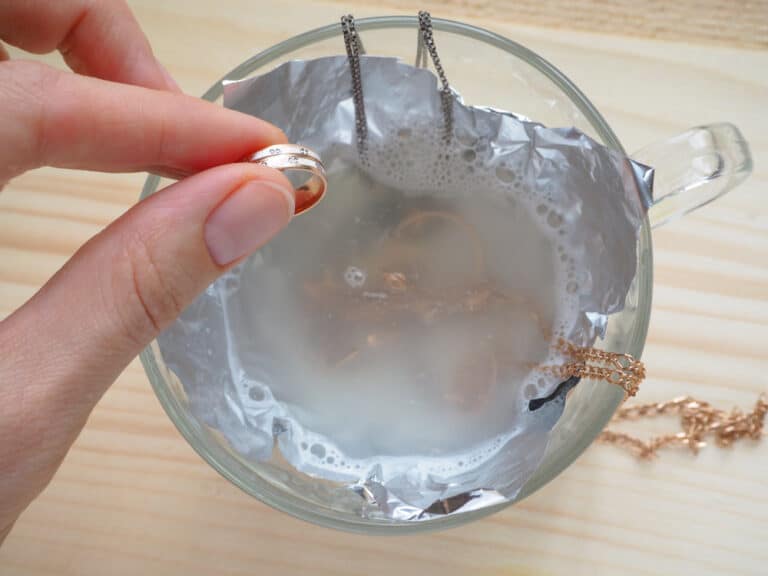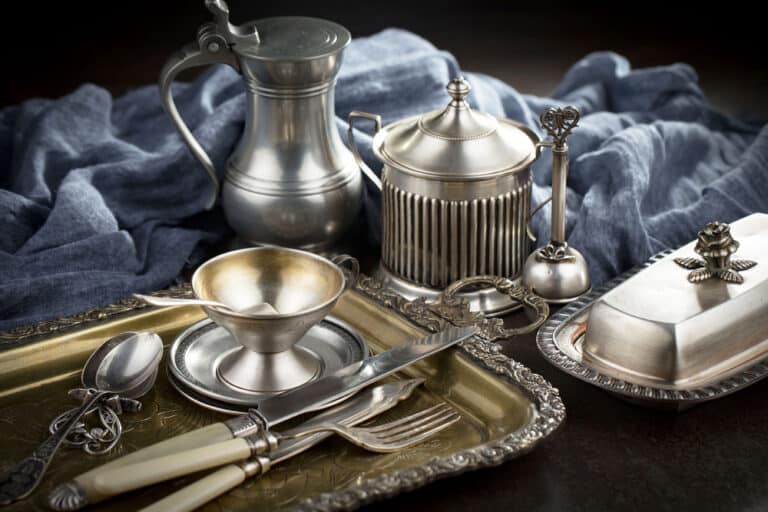If you are evaluating a piece of silver jewelry or tableware, you may wonder whether it is genuine silver. You have heard of various methods of testing whether something is made of real silver, but some of these methods are destructive. However, putting ice on it is not. But does silver melt ice?
Silver can cause ice to melt by transmitting ambient heat to it. The heat causes the ice to melt, but silver’s extremely high thermal conductivity has caused people to notice this phenomenon. You can use this property of silver to determine whether a silver object is genuine.
You may not always have ready access to ice, so you should know other methods of telling genuine silver from lookalikes. But if you have ice on hand, this method is a highly reliable way to know that the item you are testing is made of real silver. But how does it work? Let’s take a look.
Silver Causes Ice To Melt
Put a piece of ice onto a genuine silver object. The ice will immediately begin melting as if you have placed it onto a hot stove top instead of something at a relatively low ambient temperature. This effect is so pronounced that people often use it to distinguish genuine silver items from fake ones. But why does this phenomenon occur?
Silver Has Extremely High Thermal Conductivity
Due to its atomic structure, silver transmits heat exceptionally effectively and thus has a high thermal conductivity. Conduction is heat transmission through a solid or liquid, as opposed to convection, which occurs through gas, and radiation, which can happen in a vacuum.
Metals generally have high thermal conductivity and transmit heat well, as opposed to materials that transmit heat poorly, such as wood and rubber, known as insulators.
However, not all metals have the same thermal conductivity. Copper is an excellent thermal conductor, better than zinc or brass, an alloy of the two. Gold is also an excellent thermal conductor. In contrast, aluminum, iron, and its derivative, steel, are relatively poor thermal conductors.
Copper, silver, and gold are all elements in group 11 of the periodic table of elements. They have a single free s electron that doesn’t interact with the filled subshell of electrons below, in contrast to other transition metals in the preceding groups.
If such interactions occur, the electron mobility is lowered. However, when it doesn’t happen, high electron mobility causes these metals (copper, silver, and gold) to have exceedingly high electrical and thermal conductivity.
Silver has an even higher thermal conductivity than copper and has the highest thermal conductivity of any metal. The only two materials known to have a higher thermal conductivity are diamonds and superfluid helium-4. As a result, silver is highly effective at transmitting heat energy in the ambient air to another object it contacts.
If this object is ice, the heat pulled from the air will be transmitted to the ice and cause it to melt rapidly. This effect is far more pronounced than the melting that occurs with other metals, even copper. Note that it is the transmitted heat causing the melting, not the silver itself.
Using The Thermal Conductivity Of Silver To Test Genuineness
Suppose you place a piece of ice onto a silver coin or item of silver tableware. In that case, you will observe the ice melting exceptionally rapidly, which indicates that the silver in question is genuine.
Moreover, another effect that occurs due to the ice melting is that the silver object becomes icy cold all over, not only in the vicinity of the melting ice. This cooling of the thing occurs in a few seconds.
The silver that most objects in daily use, such as jewelry, coins, and tableware, are made of is not pure (999 millesimal fineness) but rather alloyed with a certain amount of other metals, particularly copper, which does affect the melting rate somewhat. However, copper also has high thermal conductivity, so if you observe this rapid melting of ice, you are dealing with high-purity silver.
Suppose you are dealing with a “fake silver” such as the alloy nickel silver (also known as German silver, Maillechort, albata, Alpacca, or Argentan). In that case, you will not observe this rapid melting, and the ice will sit for a long time on the surface of the object without appreciably liquefying (unless ambient temperatures are high).
Although silver-plated objects such as EPNS (electroplated nickel silver) have a surface plating (coating) of genuine silver, the bulk of the item’s mass comprises the silver nickel alloy. It thus does not have the same thermal conductivity as an object made up of a genuine silver alloy with a high proportion of elemental silver.
Other Ways Of Determining Whether Something Is Real Silver
The ice test is an imposing demonstration and will work reasonably reliably if you compare various silver-colored objects under the same conditions. But variations in the ambient temperature and the temperature of the thing you are testing can make for significant fluctuations in how rapidly the ice melts between one time you test and another.
If you are testing a genuine silver object under icy conditions when there is little heat in the ambient air, for example, outside on a winter’s day, the silver will not be able to transmit heat to the ice (because there is not much to conduct), and the ice will not melt.
You will have to use other ways of testing whether you are dealing with real silver. Look for stamps of millesimal fineness (for example, 925 for Sterling silver), but be aware that counterfeit silver is on the market with fake stamps. If you have an acute nose, sniff the metal to see if you detect any hint of sulfur, which indicates that it is not genuine silver.
Rub the object with a soft white cloth and check for signs of black residue. Silver tarnishes, so if you see such a residue, you are dealing with a genuine silver object. Rust, on the other hand, means you are dealing with an iron-based metal. A lack of residue also indicates that the piece is not real silver.
Test the item with a magnet. Silver is not magnetic, and the magnet will not stick to the piece. However, if you have a silver bar, try letting a magnet slide down it. The paramagnetic effects of the silver will cause it to slide down slower than you would expect.
You can also try taking off a flake of the object in question and dropping it into acid. If the acid’s color remains the same, the item will likely be genuine silver. However, this is a destructive test, and you can only apply it to pieces you own and not to ones in shops.
To test any claims of silver content, use a digital scale to find the object’s mass, submerge it in a graduated beaker of water to find the volume, and calculate its density. You can then compare this density to the known values of various silver fineness standards to see if it measures up.

Conclusion
Silver causes ice to melt rapidly due to its high thermal conductivity. Unless it is a cold day and there is little ambient heat, it is an effective way to test whether something is genuine silver. So next time you want to test a piece of silver, try the ice test!
References
- https://csef.usc.edu/History/2009/Projects/J1906.pdf
- https://en.numista.com/forum/topic4060.html
- https://en.wikipedia.org/wiki/Silver_standards
- https://en.wikipedia.org/wiki/Silver
- https://www.marthastewart.com/1541729/how-tell-silver-is-real
- https://www.greenmatters.com/p/why-does-silver-melt-ice
- https://www.quora.com/Why-does-silver-melt-ice

